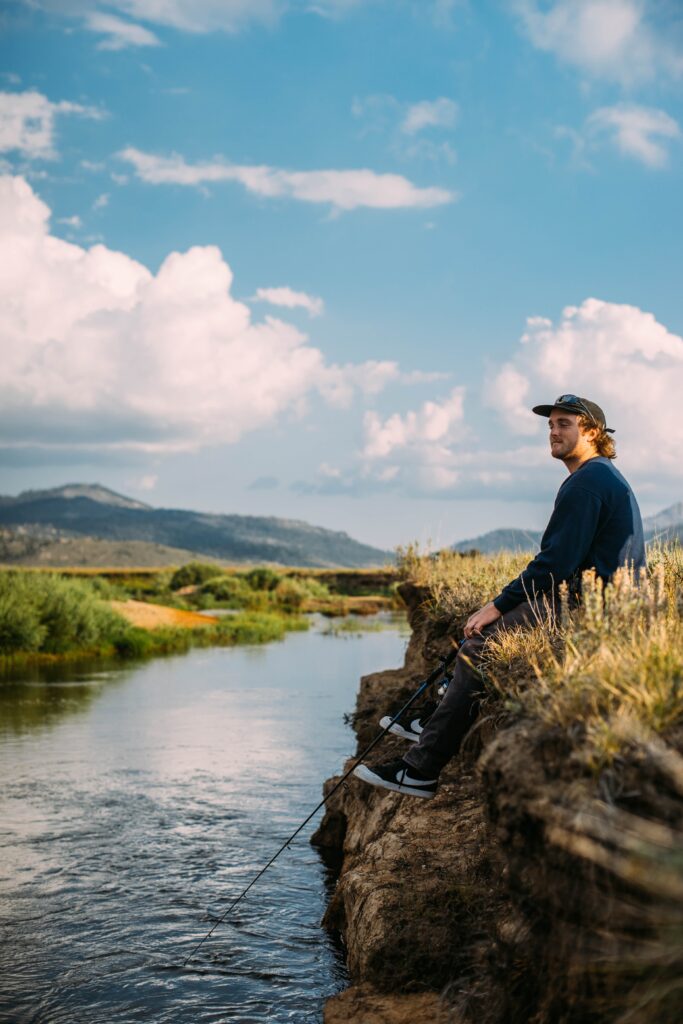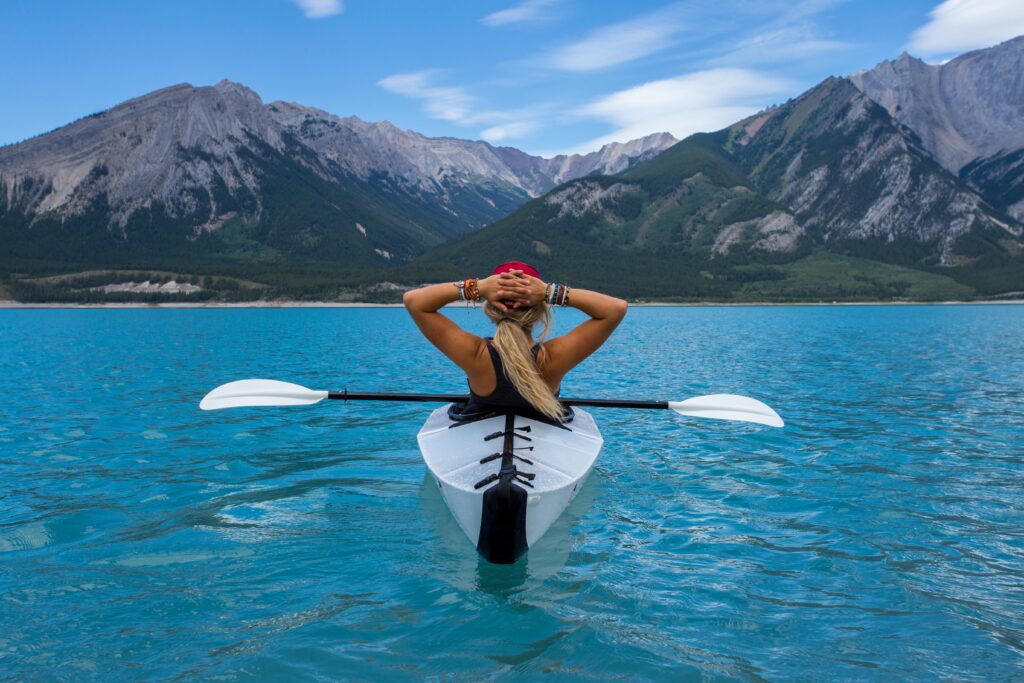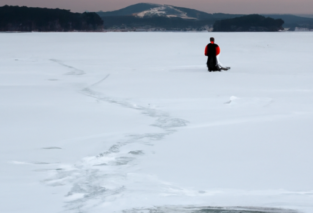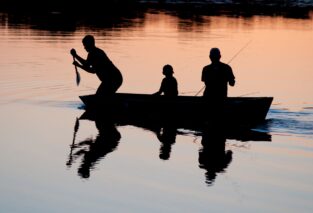Are you an avid angler looking for a new and exciting way to reel in your catch? Look no further than “Can You Go Kayak Fishing: Tips and Techniques for Fishing from a Kayak.” This comprehensive guide is jam-packed with invaluable advice and strategies to help you become a proficient kayak fisherman. From choosing the right kayak to mastering effective casting techniques, this book covers it all. So grab your paddle and get ready to embark on a thrilling fishing adventure like no other!

Choosing the Right Kayak
Consider the Fishing Environment
When choosing a kayak for fishing, one of the most important factors to consider is the fishing environment. Are you planning to fish in calm lakes and ponds, fast-moving rivers, or open ocean? Different kayaks are designed to perform better in specific environments. For calm waters, a kayak with excellent stability and maneuverability is ideal. If you’re planning to venture into rougher waters, look for a kayak with a design specifically suited for more challenging conditions. By considering the fishing environment, you can choose a kayak that will enhance your fishing experience and keep you safe on the water.
Stability and Durability
For kayak fishing, stability is a key factor. You want a kayak that offers stability, especially when you’re reeling in a big catch. Sit-on-top kayaks tend to offer better stability due to their wider design and open cockpit. Additionally, durability is an essential feature to look for when selecting a fishing kayak. You need a kayak that can withstand the inevitable bumps and scrapes that can occur while fishing. Look for kayaks made from durable materials such as polyethylene or ABS plastic, as these are known for their strength and resilience.
Size and Weight
The size and weight of the kayak are important considerations for practicality and ease of transport. If you plan to fish alone and transport your kayak on your own, a smaller and lighter kayak would be more manageable. However, if you have a friend or partner to help with transportation, a larger kayak with more storage space may be a better option. Additionally, consider the weight capacity of the kayak to ensure it can accommodate both you and your fishing gear comfortably.
Sit-On-Top vs. Sit-Inside
One decision you’ll need to make when choosing a fishing kayak is whether to opt for a sit-on-top (SOT) or a sit-inside kayak. Sit-on-top kayaks are more popular for fishing due to their ease of use and superior stability. They also provide easy access to gear and allow you to easily get in and out of the kayak. Sit-inside kayaks, on the other hand, provide more protection from the elements and can be a good choice if you plan to fish in colder conditions. Consider your personal preferences and the fishing conditions you’ll be facing to determine which type of kayak suits you best.
Essential Gear and Equipment
Fishing Rod and Reel
A fishing rod and reel are the most fundamental pieces of gear you’ll need for kayak fishing. Choose a rod and reel combo that is suitable for the type of fishing you plan to do. If you’re targeting larger fish species, opt for a rod with more backbone and a reel with a higher line capacity. It’s also a good idea to have a spare rod and reel in case of equipment failure while out on the water.
Anchor and Tether
An anchor and tether are essential for maintaining your position while fishing. They allow you to anchor your kayak in a specific spot and prevent you from drifting away. Look for a small, lightweight anchor that is easy to deploy and retrieve. A tether or anchor line is used to secure the anchor to your kayak. Ensure that the tether is strong and securely attached to your kayak to prevent it from becoming detached.
Personal Flotation Device (PFD)
Safety should always be a top priority when kayak fishing, and wearing a personal flotation device (PFD) is crucial. Choose a PFD that is comfortable, allows for freedom of movement, and has ample storage pockets for small essentials. It’s important to wear your PFD at all times while on the water, even if you consider yourself a strong swimmer.
Paddle and Paddle Leash
A reliable paddle is essential for maneuvering your kayak and reaching your fishing spots. Choose a paddle that is lightweight and durable, preferably made from fiberglass or carbon fiber. Additionally, using a paddle leash is highly recommended. It ensures that your paddle remains securely attached to your kayak, even if you accidentally drop it into the water.
Fish Finder or GPS
For serious anglers, a fish finder or GPS can greatly enhance your fishing experience. A fish finder uses sonar technology to locate and identify fish underwater, while a GPS helps you navigate and mark your favorite fishing spots. These tools can be valuable in locating fish and improving your chances of landing a big catch.
Tackle and Bait Storage
Having a well-organized tackle and bait storage system is essential for kayak fishing. Invest in tackle boxes or bags that are waterproof and have compartments to keep your fishing gear organized and easily accessible. Consider using smaller, compact storage options to optimize space on your kayak.
Safety and First Aid Kit
Always be prepared for any unforeseen circumstances by carrying a safety and first aid kit on your kayak. Your safety kit should include essentials such as a whistle, signaling mirror, and waterproof flashlight. The first aid kit should contain bandages, antiseptic ointment, and any necessary medications. Having these items readily available can make a significant difference in case of an emergency.

Preparing for the Trip
Research the Fishing Spot
Before embarking on your kayak fishing trip, take the time to research and familiarize yourself with the fishing spot. Understand the local fish species, their habits, and the best times to fish. Look for any regulations or special rules that apply to the area, such as catch limits or restricted areas. By doing thorough research, you can significantly improve your chances of success on the water.
Check the Weather and Tides
Keep a close eye on the weather forecast and tide charts before your kayak fishing trip. Inclement weather or adverse tide conditions can make for a challenging and potentially dangerous outing. Strong winds, heavy rain, or rough waters can greatly impact your ability to fish comfortably and safely. Plan your trip accordingly, and if the weather conditions are unfavorable, consider rescheduling or choosing a more sheltered fishing spot.
Notify Someone of Your Plans
Always let someone know about your kayak fishing plans. Share your itinerary, including the fishing spot and estimated return time. This ensures that someone is aware of your whereabouts and can raise the alarm if you encounter any unforeseen difficulties. It’s best to provide a trusted friend or family member with your contact information and the details of your kayak, including its color and any distinguishing features.
Pack Essential Items
Ensure that you have all the essential items packed before heading out on your kayak fishing trip. This includes your fishing gear, safety equipment, food and water, and any additional items you may need for a comfortable outing. Make a checklist to ensure you don’t forget anything important, and double-check everything before leaving.
Practice Kayak Stability and Balance
Kayak fishing requires a certain level of stability and balance. If you’re new to kayaking or have recently purchased a new kayak, take the time to practice in calm waters before heading out on your fishing trip. Familiarize yourself with how the kayak responds to your movements and practice staying balanced while casting, reeling, or landing a fish. This will help you feel more confident and comfortable on the water.
Kayak Fishing Techniques
Anchoring and Positioning
Anchoring is a common technique used in kayak fishing to maintain your position in a specific spot. When anchoring, be sure to choose a suitable location that offers the best chance of attracting fish. Use an anchor trolley system to easily adjust your position and prevent your kayak from spinning in the wind or current.
Casting and Retrieving
Casting and retrieving are fundamental skills for successful kayak fishing. Practice your casting technique to ensure accuracy and distance. Remember to be mindful of your surroundings to avoid getting your line tangled in vegetation or other obstacles. After casting, retrieve your lure or bait in a manner that mimics the natural movement of the target fish species.
Drift Fishing
Drift fishing involves allowing your kayak to drift with the current or wind while fishing. This technique can be highly effective for covering larger areas of water and locating actively feeding fish. Use a drift sock or drift anchor to control your drift speed and maintain a consistent presentation. Pay close attention to your surroundings and adjust your drift as necessary to target different areas.
Trolling
Trolling is a popular kayak fishing technique that involves dragging a lure or bait through the water while moving your kayak. This method can be especially effective for targeting actively feeding fish or covering a large area in search of fish. Use a rod holder or kayak-specific trolling setup to keep your rod secure while trolling and ensure that you’re able to detect strikes.
Bottom Fishing
Bottom fishing is a technique that involves targeting fish species that feed near the seafloor, often in deeper waters. Use a weighted rig, such as a Carolina rig or a jig, to keep your bait or lure near the bottom. Pay attention to your depth finder or fish finder to locate structures or drop-offs where fish are likely to congregate.
Using Live Bait
Using live bait can be highly effective for enticing fish to bite. Common live baits used in kayak fishing include minnows, worms, and shrimp. Carry a suitable bait bucket or container to keep your live bait fresh and secure. Ensure that you handle the live bait carefully to avoid injury and maintain its vitality.
Sight Fishing
Sight fishing is a thrilling technique that involves spotting fish in the water and targeting them directly. Look for signs such as fish movement, disturbances on the surface, or feeding activity. Polarized sunglasses can greatly enhance your ability to spot fish in the water. When sight fishing, cast your lure or bait ahead of the fish’s path to avoid spooking them.

Tips for Kayak Fishing Success
Stay Stealthy and Quiet
Fish can be easily spooked by loud noises or sudden movements. To increase your chances of success, maintain a quiet and stealthy approach on the water. Avoid slamming hatches, dropping equipment, or making excessive noise. Paddle slowly and smoothly to minimize disturbance and give yourself the best chance of attracting fish.
Learn to Read the Water
Learning to read the water is a valuable skill for kayak fishing. Look for signs such as current seams, baitfish activity, or changes in water color or temperature. These indicators can help you locate areas where fish are likely to congregate. Understanding the water conditions and the behavior of fish will significantly improve your chances of a successful fishing trip.
Observe and Understand Fish Behavior
Observing and understanding fish behavior is key to becoming a successful kayak angler. Take note of how fish react to different conditions, such as changes in weather or tide. For example, fish may be more active during low light conditions or feed actively during specific tide stages. By understanding fish behavior, you can adapt your fishing techniques accordingly and increase your chances of hooking a trophy fish.
Master the Art of Kayak Control
Having good control over your kayak is essential for effective fishing. Practice maneuvering your kayak in different conditions, such as wind or current. Learn how to make smooth turns, control your speed, and position yourself accurately. By mastering kayak control, you’ll be able to position yourself in the best spots and present your bait or lure effectively.
Use the Wind and Current to Your Advantage
The wind and current can work in your favor when kayak fishing. If possible, position yourself so that the wind or current pushes you towards potential feeding areas. This natural drift can increase your chances of encountering actively feeding fish. Use your paddle or a drift sock to fine-tune your position and take advantage of the natural movement of the water.
Fish during Optimal Times
Fish are more active and likely to feed during certain times of the day. Early mornings and late afternoons are often prime times for fishing, as the water is typically cooler and fish tend to be more active. However, the optimal fishing times can vary depending on the species you’re targeting and the specific fishing spot. Research your target species and the local fishing conditions to determine the best times to maximize your chances of success.
Practice Catch and Release
Practicing catch and release is not only ethical but also crucial for protecting and conserving fish populations. Handle fish with care, using wet hands or gloves to minimize any damage to their scales or slime coat. Remove the hook as quickly as possible and release the fish gently back into the water. Avoid taking fish out of the water for extended periods and use barbless hooks whenever possible.
Dealing with Challenges
Dealing with Wind and Current
Wind and current can present challenges when kayak fishing. Learning to navigate and adjust your paddling technique accordingly is essential. Paddle into the wind or current at an angle to minimize resistance and maintain control. If the conditions become too challenging or dangerous, consider moving to a more sheltered area or rescheduling your fishing trip.
Navigating Shallow Waters and Obstacles
Kayaks have the advantage of being able to access shallow waters and navigate through obstacles that larger boats cannot. However, it’s important to exercise caution when navigating in these conditions. Get to know the water depth and watch out for submerged rocks, logs, or other potential hazards. Use a paddle with a shallow blade or employ a push pole to maneuver in shallow waters without disturbing the bottom.
Handling Big Fish
Hooking into a big fish can be an exhilarating experience, but it also presents challenges in a kayak. When fighting a big fish, plant your feet firmly on the kayak’s floor to maintain balance and stability. Apply steady pressure and allow the fish to tire itself out before attempting to bring it closer to the kayak. Have a net or a lip-gripping tool ready to assist in landing the fish safely.
Avoiding Tangles and Snags
Tangles and snags can be frustrating and time-consuming, but there are measures you can take to minimize the chances of encountering them. Keep your fishing gear well-organized and secure to prevent tangles. When casting, be mindful of your surroundings, especially trees, shoreline vegetation, or other obstructions. Practice different casting techniques, such as pitching or flipping, to avoid unnecessary tangles.
Managing Fatigue and Stamina
Kayak fishing can be physically demanding, especially during long fishing sessions or when fishing in challenging conditions. Stay hydrated by keeping a water bottle within reach and take regular breaks to rest and stretch your muscles. Use your core and leg muscles to conserve energy when paddling and practice proper body mechanics to reduce fatigue. Building up your stamina gradually will allow you to enjoy longer and more productive fishing trips.

Safety Precautions
Wear a Life Jacket at All Times
Wearing a properly fitting life jacket or personal flotation device (PFD) is crucial for your safety on the water. Choose a PFD that is designed specifically for kayaking and ensure that it is Coast Guard-approved. Make it a habit to wear your PFD at all times while kayaking, regardless of your swimming ability.
Master Self-Rescue Techniques
As a kayak angler, it’s important to know how to perform self-rescue techniques in case of capsizing or falling overboard. Practice re-entering your kayak from the water and familiarize yourself with different self-rescue methods such as the paddle float rescue or the cowboy rescue. Being prepared to handle these situations will give you confidence and peace of mind on the water.
Be Aware of Hypothermia Risks
Even during warmer months, the risk of hypothermia exists when kayaking, especially if you’re exposed to cold water or inclement weather. Dress appropriately for the conditions, wearing moisture-wicking and insulating layers. Always carry a dry change of clothes in a waterproof bag and consider wearing a wetsuit or drysuit if you plan to kayak in colder waters.
Avoid Overloading the Kayak
It can be tempting to bring along excessive gear and equipment, but overloading your kayak can compromise its stability and safety. Be mindful of your kayak’s weight capacity and prioritize essential items. Distribute the weight evenly throughout the kayak to maintain balance and stability. Leave unnecessary items behind to ensure a safe and enjoyable fishing experience.
Stay Hydrated and Protect from Sunburn
Being out on the water for extended periods can expose you to the sun’s harmful rays. Stay hydrated by drinking plenty of water and consider using a hydration pack for easy access. Apply sunscreen generously to all exposed skin and wear a hat, sunglasses, and protective clothing to shield yourself from the sun’s damaging effects.
Learn Basic Navigation and GPS Usage
Having a basic understanding of navigation techniques and how to use a GPS device is essential for safe kayak fishing. Learn how to read nautical charts or use online mapping tools to plan your routes. Familiarize yourself with basic navigation aids such as buoys or landmarks. Additionally, practice using a GPS device to mark waypoints or navigate to favorite fishing spots. These skills will help you navigate safely and efficiently on the water.
Proper Fish Handling and Storage
Minimize Handling Time
When landing a fish, aim to minimize handling time as much as possible. This reduces stress on the fish and increases its chances of survival after release. Avoid excessive handling, keep the fish in the water as much as possible, and use appropriate tools to safely remove the hook.
Use Proper Grips and Tools
To handle fish safely, use proper grips and tools to minimize harm to both the fish and yourself. Lip-gripping tools or fish grips are common options for securing the fish’s mouth without causing injury. Alternatively, wet your hands before handling the fish and support its weight with both hands to prevent unnecessary stress or damage.
Handle Fish with Wet Hands or Gloves
Fish have a natural mucus coating that helps protect their skin and scales. Dry hands or gloves can remove this protective coating, making the fish more susceptible to infections. Wet your hands before handling fish or wear gloves specifically designed for fish handling to minimize damage to the fish.
Practice Ethical Catch and Release
When catch and release fishing, it’s important to practice ethical techniques to ensure the fish’s survival. Avoid using excessive force or playing the fish to exhaustion. Remove the hook gently and quickly, using pliers or a fish hook remover if necessary. Revive the fish in the water, if needed, by gently holding it facing into the current to help oxygenate its gills. Once the fish has regained its strength, release it back into the water.
Learn Safe Storage and Cleaning
If you plan to keep fish for consumption, it’s crucial to learn safe storage and cleaning practices. Keep a cooler or insulated bag with ice on board to maintain the freshness of the fish. Once onshore, clean the fish promptly using a sharp fillet knife and rinse the fillets thoroughly in clean water. Properly package and store the fillets to prevent spoilage and ensure they remain safe for consumption.
Preserve Fish Freshness
To ensure the quality and freshness of your caught fish, practice proper handling and preservation techniques. Bleed the fish immediately after capture by cutting the gills and allowing the blood to drain. Keep the fish on ice or in a well-ventilated cooler to maintain its freshness. Clean and package the fish as soon as possible after the fishing trip to preserve its flavor and texture.

Kayak Fishing Etiquette
Respect Other Anglers
When kayak fishing, it’s important to be respectful of other anglers. Avoid crowding or encroaching on someone else’s fishing area. Give fellow anglers ample space and maintain a courteous distance. If you encounter another angler, communicate politely and share information or tips if appropriate.
Give Right of Way
Respecting the right of way is essential for maintaining safety and harmony on the water. Yield to other boaters, kayakers, or anglers when navigating. Be aware of your surroundings and avoid cutting off or disrupting the path of others. By showing consideration and giving right of way, you contribute to a positive and enjoyable fishing experience for everyone.
Avoid Noise and Disturbances
Maintain a peaceful and quiet environment while kayak fishing. Unnecessary noise or disturbances can scare away fish and disrupt the tranquility of the natural surroundings. Minimize the use of loud or unnecessary equipment, and remove trash or debris from your kayak to prevent them from creating unnecessary noise or distractions.
Clean Up After Yourself
Responsible anglers take pride in leaving the fishing spot cleaner than they found it. Dispose of any trash or fishing-related debris properly. This includes empty bait containers, fishing line, and food wrappers. Leave the area in the same condition, if not better, to ensure the preservation of the environment and the enjoyment of future anglers.
Follow Fishing Regulations and Limits
Every fishing spot has specific regulations and limits in place to protect fish populations and ecosystems. It is your responsibility as a kayak angler to familiarize yourself with these regulations and abide by them. Know the size and bag limits for your target fish species, and understand any seasonal closures or restricted areas. By following fishing regulations, you contribute to the conservation of fish and their habitats.
Joining Kayak Fishing Communities
Local Kayak Fishing Clubs
Joining a local kayak fishing club can be a great way to connect with fellow anglers, learn new techniques, and discover new fishing spots. These clubs often organize group outings, tournaments, and workshops. Participating in club activities not only helps you improve as an angler but also gives you the opportunity to share your knowledge and experiences with others.
Online Forums and Social Media Groups
The internet offers a wealth of resources for kayak anglers, including online forums and social media groups dedicated to kayak fishing. These platforms allow you to connect with anglers from around the world, ask questions, share stories, and learn from others’ experiences. Engaging in online communities can provide valuable insights, tips, and recommendations for improving your kayak fishing skills.
Participate in Tournaments and Events
Kayak fishing tournaments and events are a fantastic way to test your skills, compete against others, and potentially win prizes. Look for local or regional kayak fishing tournaments and consider participating. These events often provide opportunities to learn from top anglers, discover new techniques, and make lasting connections within the kayak fishing community.
Share Experiences and Learn from Others
Sharing your kayak fishing experiences with others can be rewarding and educational. Whether it’s through blog posts, videos, or social media, documenting and sharing your fishing trips can inspire and inform fellow anglers. In turn, engaging with other anglers’ experiences can provide valuable insights and ideas for your future fishing adventures.
Promote Conservation and Responsible Fishing
As a member of the kayak fishing community, it’s important to promote conservation and responsible fishing practices. Encourage catch and release, respect fishing regulations, and educate others about the importance of preserving fish populations and their habitats. By advocating for responsible fishing practices, you contribute to the long-term sustainability of the sport and help ensure that future generations can enjoy it as well.
By following these tips and techniques, you can enhance your kayak fishing experience and increase your chances of success on the water. Always prioritize safety, practice ethical fishing, and respect the natural environment and fellow anglers. Kayak fishing offers a unique and rewarding way to connect with nature and pursue your passion for fishing. So, grab your kayak, gear up, and embark on your next kayak fishing adventure!





